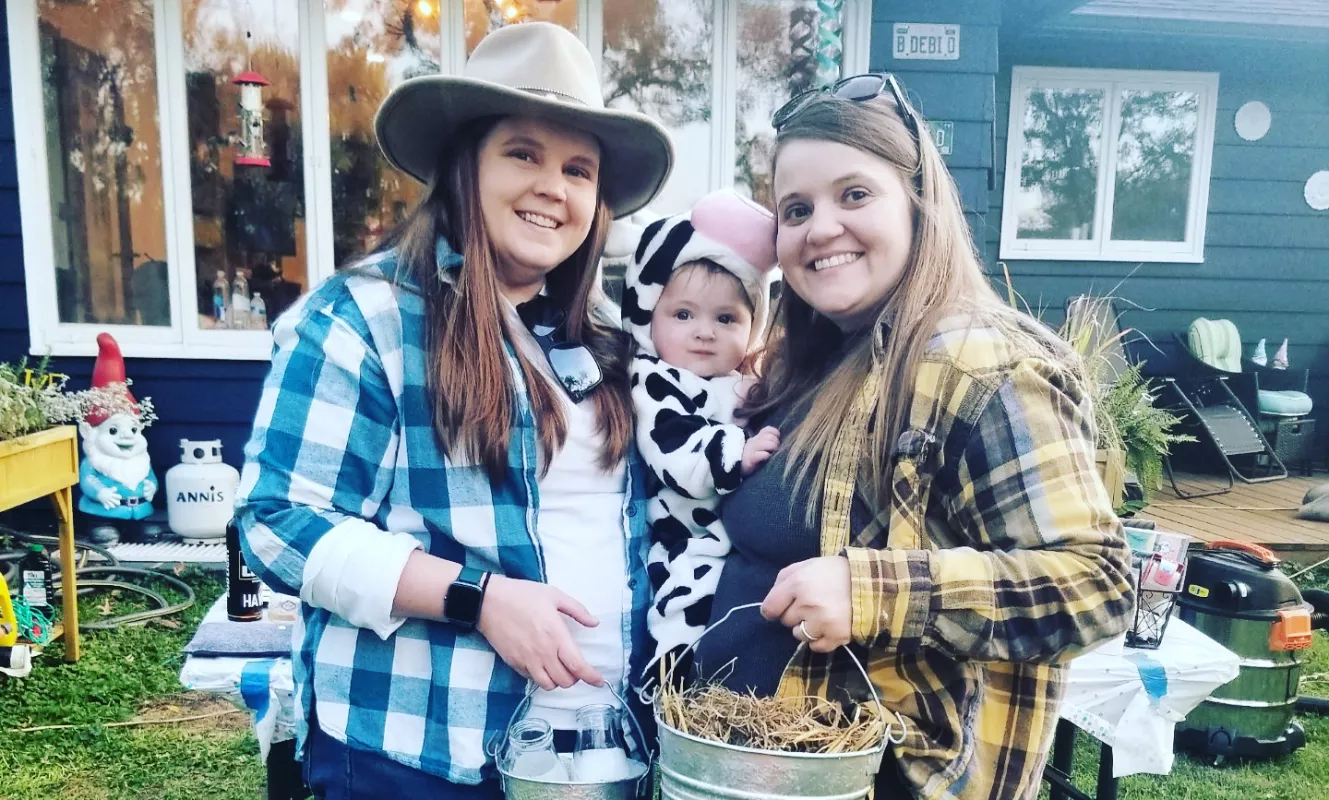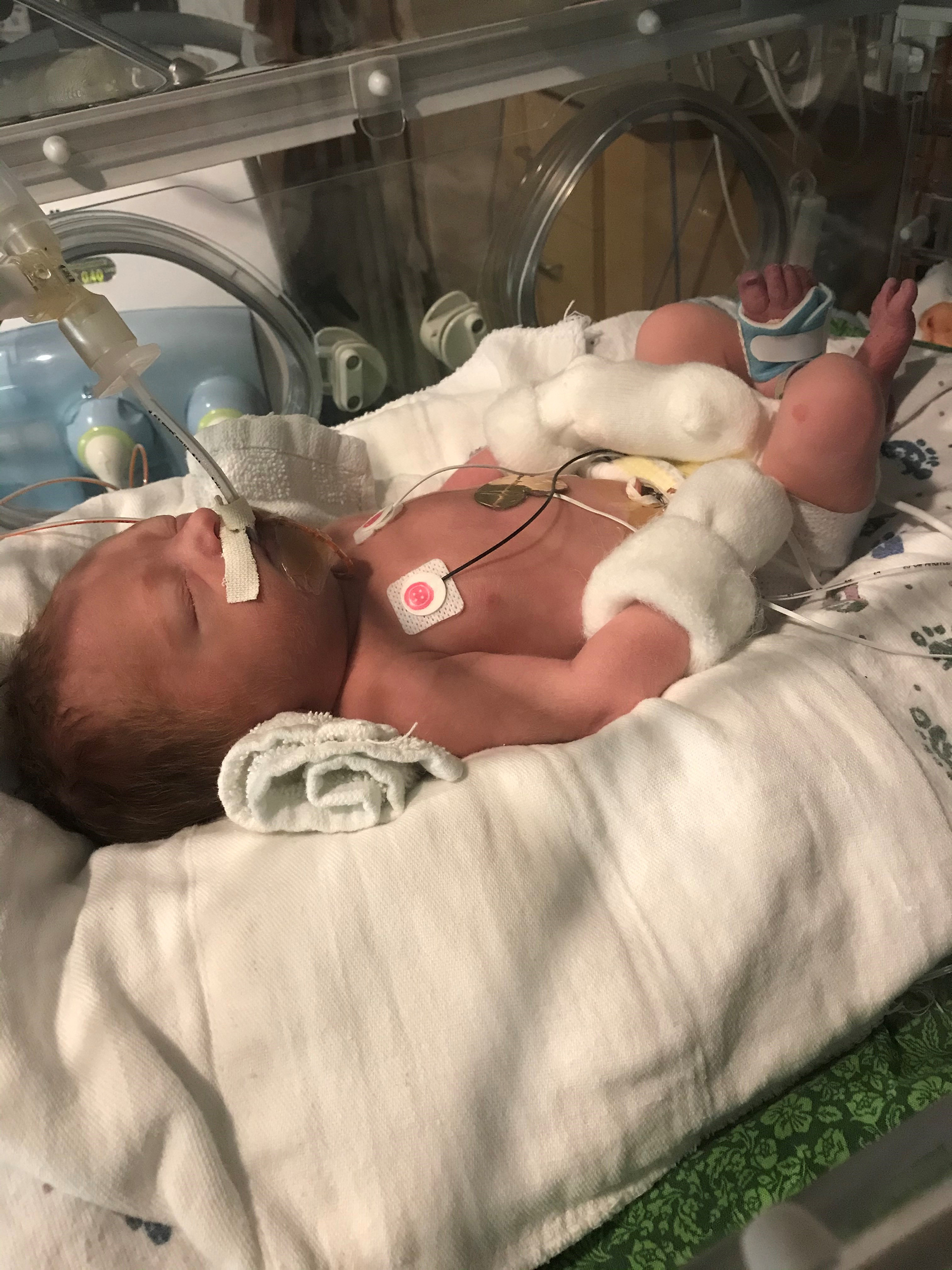UI doctors save baby with heart condition undetected in the womb

When first-time moms Kayla and Ashley Garrison’s son, Lawson, arrived five weeks early, they weren’t overly concerned; all of his prenatal checkups indicated he was a healthy baby.
“We even did an ultrasound of his heart when he was in utero because IVF (in vitro fertilization) babies have a higher incidence of heart condition,” Kayla says. "Nothing showed up."
Shortly after birth, however, Lawson started having difficulty breathing and was a bit discolored. He was admitted to the neonatal intensive care unit (NICU) of their local hospital in Waterloo.
“He just wasn’t getting better, they weren’t seeing any improvements,” Ashley says. “They thought the breathing issue might be because he was a little early and his lungs weren’t fully developed.”
When he became inconsolable following a bath at 3 days old, doctors listened to his chest “and thought they heard something a little ‘off,’ maybe a murmur,” Ashley says.
His doctors consulted with pediatric cardiologists at University of Iowa Stead Family Children’s Hospital, Iowa’s only comprehensive pediatric cardiology center. A short time later, Lawson was airlifted to Iowa City to be treated by Ian Law, MD, director of pediatric cardiology at UI Stead Family Children’s Hospital.
‘Scary rollercoaster of emotions’
“Once we got to Iowa City we were just so impressed by the size and expertise of the team caring for him,” Ashley says. “Dr. Law diagnosed him immediately. It was a scary rollercoaster of emotions but throughout the process they all continued to reassure us that everything was going to be okay.”
Law says Lawson was born with total anomalous pulmonary venous return (TAPVR), a condition in which all four pulmonary veins do not connect properly, causing blood to pump from the lungs to the right atrium rather than to the left.

“Fetal ultrasounds can pick up about 75% of significant heart issues before a baby is born, but in Lawson’s case he has a heart condition that can be difficult to diagnose in utero,” Law says. “The challenge with this particular type of heart disease is that in the womb there’s not much blood going to the lungs to begin with, so it wasn’t clear until he was born that the blood wasn’t draining back from the lungs into the heart properly."
Lawson needed heart surgery to correct the TAPVR, but he was still too small for the procedure. He weighed just under 5 pounds when he was born, and Law wanted him to be at 6 pounds for surgery, which required a high-calorie diet. “Bigger is always better for surgery,” Law says. “Lawson’s heart was smaller than a walnut, almost the size of a large grape, so we wanted him to grow a bit more before operating. Thankfully, in Lawson’s situation we had the luxury of waiting.”
Getting ready for surgery
Lawson spent just one day in the NICU at UI Stead Family Children’s Hospital before being transferred to the pediatric intensive care unit (PICU) and was discharged the next day.
His breathing had stabilized and he wasn’t required to be on oxygen, but he did have a gastrointestinal tube for feeding.
“It was definitely terrifying,” Kayla says. “With his condition his oxygen was always pretty low but learning that babies don’t need as much oxygen as adults helped. We had a nurse who would stop by twice a week, and we got a pulse oximeter so we could monitor his oxygen levels.”
After spending a month at home, Lawson grew large enough that his doctors felt comfortable performing surgery on April 15, 2021. The surgery went well without any complications, and Lawson has received good reports from his doctors since.
